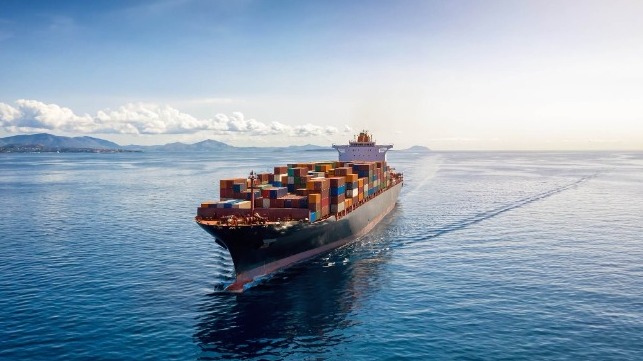Clarksons: For CII Compliance, Slowing Down Helps Less Than You Think

Many of the world's shipowners are planning to continue trading their older, less fuel-efficient tonnage using a time-honored method: slowing down. Pulling back from the vessel's rated sea speed by just 10 percent can reduce fuel consumption by 25 percent, because drag decreases exponentially as the ship slows down.
However, the slow-steaming method will only go so far at lower speeds, according to Clarksons, and the limit is closer than many shipowners think. Slowdowns may look effective in theory at low speed ranges, but in a new analysis, Clarksons' Green Transition team found that the CII improvement potential from deep speed reduction may be "grossly overestimated" when it comes to real-world conditions. This strategy may not be enough to improve the vessel's emissions ratings.
"The reason for the misconception is that calculations are based on textbook speed-consumption curves which have an exponential growth across an entire speed range. However, if you factor in all of the consumers of a ship and the variables of real-world sailing conditions, the curve becomes less exponential (or flatter) at lower speeds," says lead analyst Jon Leonhardsen.
Clarksons has launched a new modeling tool to help shipowners make accurate predictions about their CII compliance strategy, and this method should yield more accurate results, says team lead Kenneth Tveter - as much as 30 percent more accurate. As the speed-consumption curve flattens out at low speed in the real world, "the marginal fuel-saving for distance sailed becomes lower, and this is ultimately what matters for CII performance," he explains.
While some ships may be able to attain compliance by implementing steep slowdowns, this strategy won't work for all, and there are some vessels that will have to invest in "costly measures and improvements," Tveter said. Digital modeling of performance can help shipowners make realistic plans about what they'll need to do to comply, according to Clarksons.
Compliance with the CII has real-world financial implications for the shipowner. CII ratings are already having an impact on the value of secondhand tonnage, according to VesselsValue. The regulation divides ships into five classes based on emissions performance - A, B, C, D and E. Vessels in the B and C classes trade hands at a healthy clip of 11-13 percent annually, but vessels rated in the E band appear to be harder to sell, and only 3 percent were traded in 2022.

that matters most
Get the latest maritime news delivered to your inbox daily.
“CII is becoming increasingly influential in the sale and purchase market. At the moment, this is primarily manifesting in the liquidity of vessels. This is consistent with the expectation that vessels in band E will carry capital requirements, or will see their earnings potential reduce in the near future,” observed VesselsValue.
The slowdown compliance strategy scrutinized by Clarksons also has a major financial impact on owners, and on the industry generally. According to leading boxship operator MSC, CII-driven slowdowns are expected to absorb as much as 10 percent of cargo-carrying capacity across the global container fleet.
